Do something for the environment. It’s ours
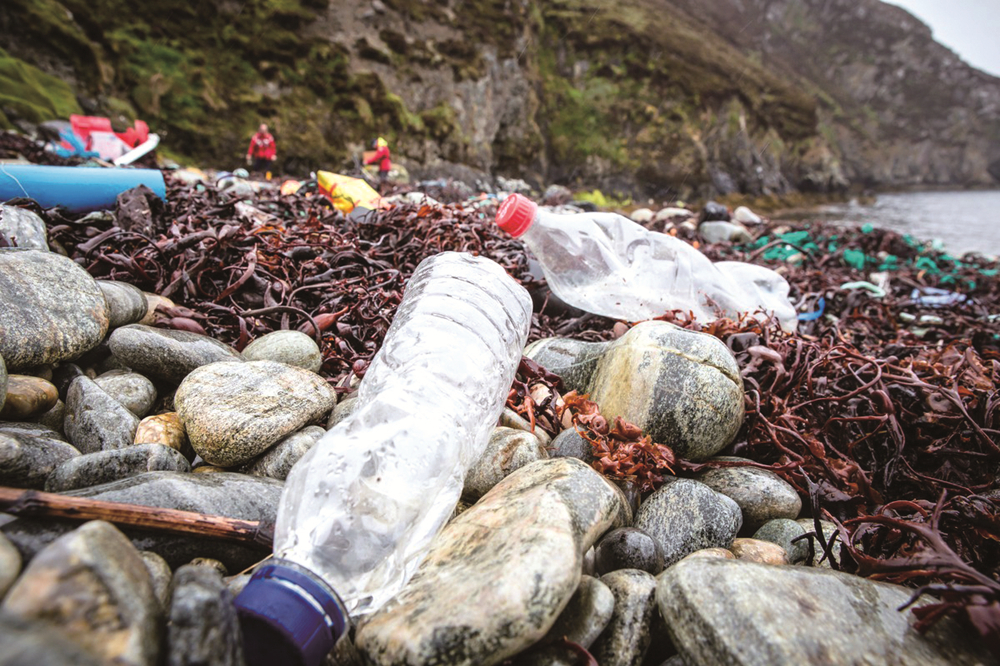
Hong Kong people, especially the younger generation, talk all the time about the need to protect the environment in this city of seven million. But, they’re willing to sacrifice very little in doing that.
Take plastic waste for instance. Every day in Hong Kong, hundreds of thousands of styrofoam lunch boxes, along with plastic-coated cups and plastic straws, are discarded. They mostly end up in landfills that will become part of the land reclaimed from the sea.
Tons of meat, vegetables and fish are transported in large styrofoam cartons that are dumped onto the streets or in the sea after use. Pieces of these offensive white plastics can be seen at all times floating on the murky waters near the fish market in Aberdeen typhoon shelter.
There is a law requiring vendors to charge customers for one-use plastic bags. But, the charge, at 50 Hong Kong cents (about 6 US cents) apiece is too insignificant for most shoppers to care about.
While most other major world cities, including New York, London and Shanghai, are passing stricter and stricter laws to cut down the use of plastic materials, Hong Kong is sitting tight doing precious little other than complaining.
Some city authorities have banned the use of plastic straws which have long been the target of environmentalists. Discarded plastic straws, which usually end up in the ocean, are listed by environmental groups as one of the top 10 waste items found on beaches.
Coffee and tea cups have also been targeted by environmentalists, prompting some coffee outlets like Starbucks in some cities to charge customers a fee for using disposal cups. They also try to offer discounts for customers who bring their own reusable cups.
Do Hong Kong people care? Certainly not the fast-food joints which continue to provide customers with one-use plastic utensils, cups and straws. They also cater to many take-away customers who have no qualms about throwing away the styrofoam containers and plastic utensils after consuming their lunch or dinner.
Any proposal to restrict the use of plastics would trigger a storm of protests from the powerful business groups who would object to anything that could be seen to add to their costs.
Consumers will have to take the initiative to reject the use of disposable plastics for the sake of the environment.
By Peter Liang | chinadaily.com.cn |
Robust fundamentals boost Moutai
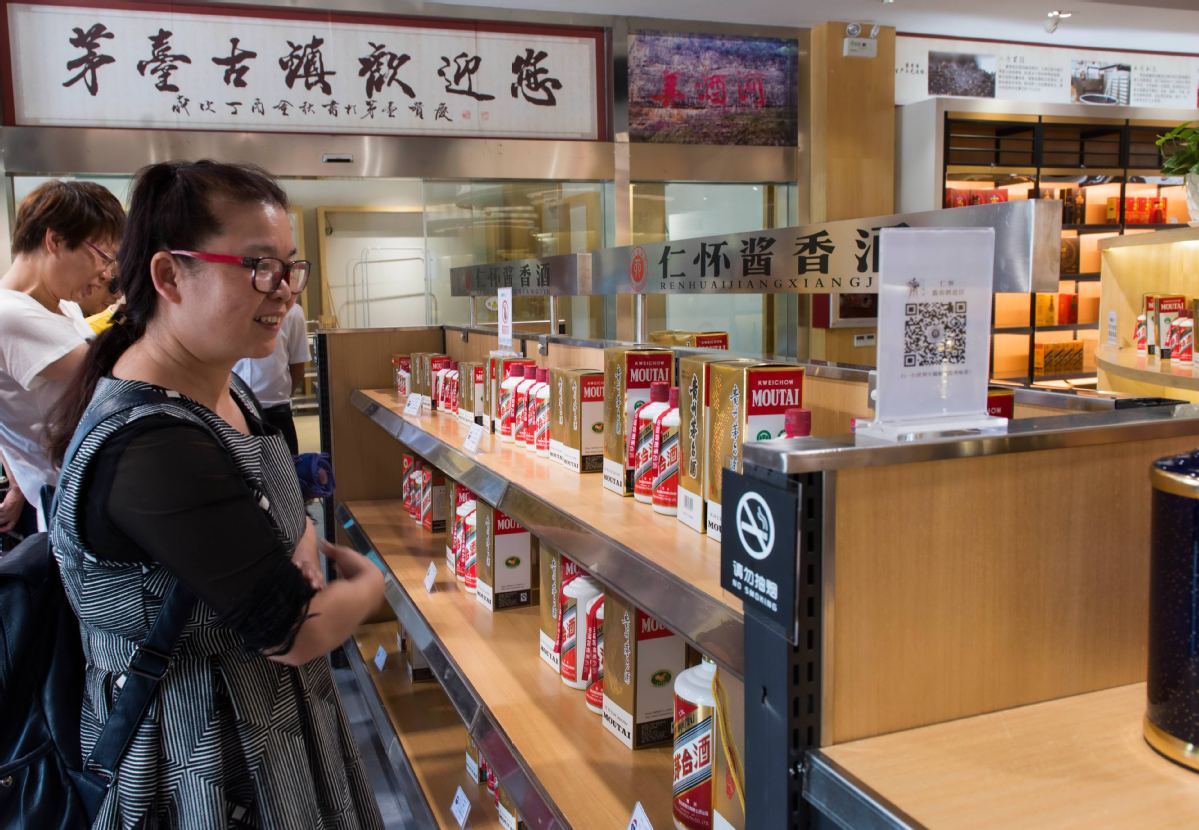
Distiller remains focused on balancing supply shortfall with soaring demand
Kweichow Moutai Co Ltd, China’s signature high-end spirit maker, netted double-digit growth rates for its major economic indicators in the first half of the year, the highest recorded in the past few years.
In the first six months of 2018, Moutai achieved sales revenue of 35 billion yuan ($5.23 billion), jumping 37 percent year-on-year. During the same period, the company’s net profits expanded by 40 percent, according to its statement released on Sunday.
Moutai, a distiller from Maotai town in Southwestern China’s Guizhou province, added that the figures are based on preliminary accounting data, meaning the final figures could differ. The company will disclose its official half-year earnings report at a later time.
Shanghai-listed Moutai closed 1.03 percent higher at 754.68 yuan per share on Monday, with a peak of 764.11 yuan during the day’s trading. Based on Monday’s closing price, the company’s valuation now stands at 948 billion yuan.
Earlier, it became the first consumer stock to achieve a market value exceeding 1 trillion yuan, higher than London-based Diageo Plc and Brazil-based Ambev SA.
Li Baofang, chairman of Moutai, said it is highly likely that the group will be able to achieve whole year sales revenue of 90 billion yuan in 2018. Next year, it is expected to achieve sales revenue of 100 billion yuan.
“The income of liquor products accounts for 94 percent of the group’s revenues, indicating that our competitive advantage and core strength are in our main business. For Moutai, it has completely transformed from a buyers’ market into a seller’s market,” he said.
“With strong demand and tight supply, we have been staying rational and trying to solve the difference between supply and demand, to help the market to maintain its balance.”
Moutai announced last year that it would raise the prices of its products by an average of 18 percent this year. Li said the market response after the company’s price adjustment is in line with expectations.
In the second half of the year, it is expected that supply will remain short of demand. As a result, balancing supply and demand will still remain the group’s major focus.
In the long term, Li said the company aims to further improve its business performance, raise competitiveness and soft power, and clear its sub-affiliates that are suffering losses or have become irrelevant.
A 500 milliliter bottle of Moutai’s classic Feitian 53 percent liquor that left the factory in 2015 now retails for 2,388 yuan on online platform JD. Earlier this year, the price of the same product was retailing for less than 2,000 yuan.
By ZHU WENQIAN/YANG JUN | China Daily |
Cheesemakers hit by tariff dispute
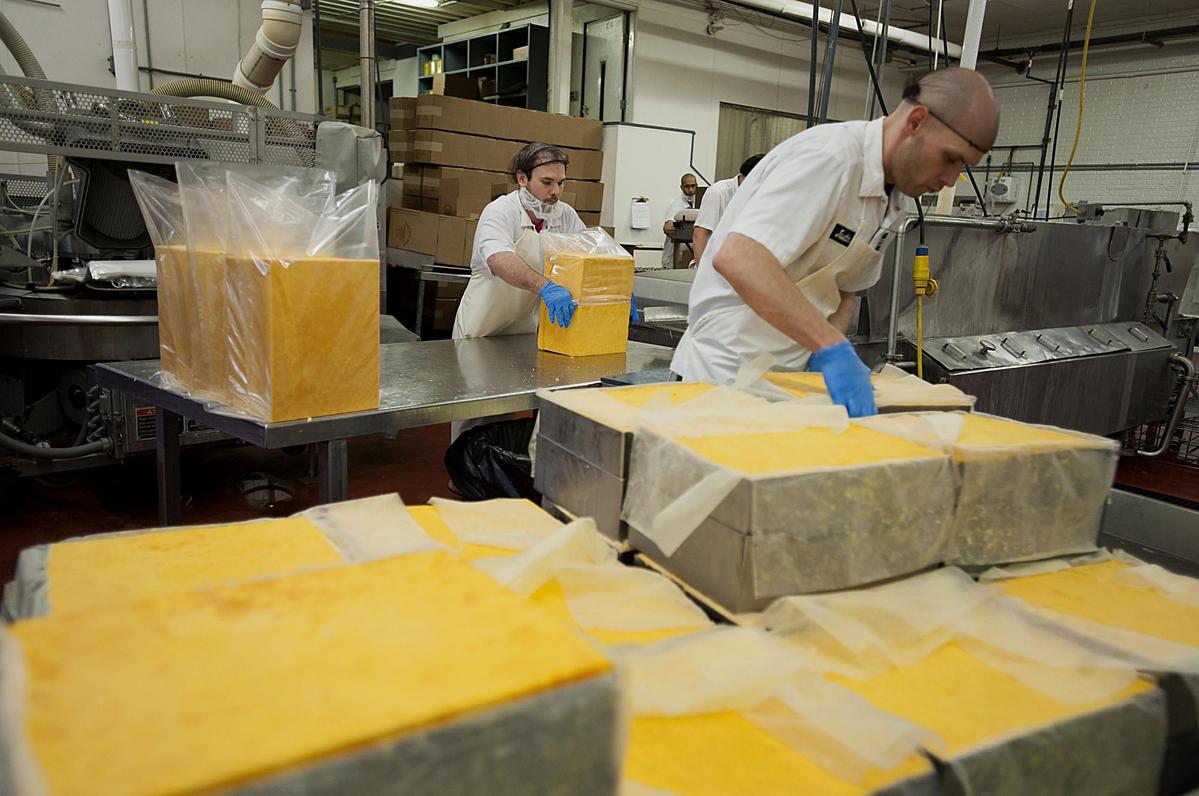
Nearly 635 million kilograms of American cheese are in cold storage in the United States. That’s roughly 1.8 kilos of cheese for every American, the highest amount since record-keeping began in 1917.
And that amount could go higher as the two main US dairy states-California and Wisconsin-deal with the impact of retaliatory tariffs on dairy products from Mexico and China.
On July 5, Mexico and China put tariffs on $986 million worth of US dairy exports-$408 million worth of cheese to China and $578 million worth of dairy products to Mexico-as retaliation for the Trump administration’s tariffs on imports of steel and aluminum. US dairy exports totaled $5.5 billion last year, including $1.3 billion to Mexico alone, according to the US Agriculture Department.
Mexican officials have said that its list was designed to hit at parts of the US represented by high-profile Republicans: steel from Vice-President Mike Pence’s home state of Indiana, cheese from House Speaker Paul Ryan’s home state of Wisconsin, and motorboats from Senator Marco Rubio’s Florida.
In addition to the tariffs, US farmers also fear that they could lose access to Canada and Mexico if Trump goes ahead with his threat to withdraw from the North American Free Trade Agreement.
“If export markets get shut off, I could see us getting to the point where we’re dumping our milk in the fields,” Jeff Schwager, the president of Sartori Co, in Plymouth, Wisconsin, told The New York Times. “It’ll be a big ripple effect through the state.”
Sartori has produced cheese in Plymouth for generations with milk it purchases from more than 100 dairy farms throughout the state.
Plymouth was once the site of the National Cheese Exchange, where cheese commodity prices were set. The town of 8,445 people, about an hour north of Milwaukee, calls itself the cheese capital of the world. About 15 percent of all US cheese passes through the town.
Sartori employs roughly 500 workers in the state. The company said it earns just one-tenth of its revenue from exports to 49 countries, but exports to foreign markets are its fastest growing segment. Sartori’s two biggest foreign markets are Mexico and Canada and US cheese is more expensive there now. The price increase is enough that the company’s customers, including restaurant chains, are looking at signing contracts with Sartori’s European competitors, according to Schwager.
He said that overproduction has already created a glut of milk on the market, driving down dairy prices and threatening some of the 130 family farms on which he relies.
Schwager estimated the new tariffs will cut 1.5 percent, or around $4 million, from his roughly $265 million in annual cheese sales.
July milk futures have dropped 12 percent since Mexico announced that it would strike back with tariffs, according to dairy industry officials. The current price is around $34 per 100 kilos, below the average for 2017.
The price for a barrel, or 227 kilos, of white cheddar last week hit its lowest level since 2009, according to commodities analysts. Dick Groves, publisher of Wisconsin-based Cheese Reporter, said that the real impact of the dispute has yet to be reflected in official statistics.
BelGioioso Cheese Inc, a second-generation family company in Green Bay, Wisconsin, said sales to Mexico already have dropped. “It’s a nightmare,” Errico Auricchio, BelGioioso’s president, told The Wall Street Journal. BelGioioso is charging some overseas customers less to keep their business.
In California, Annie AcMoody, director of economic analysis for Western United Dairymen, a trade association in Modesto, said the new tariffs and depressed markets “will certainly send some more dairies out of business”.
While Wisconsin may have the most dairy farms, 8,500, California is the nation’s No 1 dairy producer, turning out 17.7 billion kilos of milk in 2017. The state accounts for one-third of the US dairy products exported abroad, much of it being cheese and milk powder, which are highly sought by Mexico and China.
The dairy industry contributes $43.4 billion to Wisconsin’s state’s economy. The US Chamber of Commerce says retaliatory tariffs against the US threaten about a billion dollars of Wisconsin’s exports, including cheese, cranberries and Harley-Davidson motorcycles. To escape the European Union’s tariffs on US imports, Harley-Davidson said that it would move some production to Europe.
Dairy farmers throughout the US have had to deal with declining milk consumption for decades, so many have turned more of the milk into cheese. To sell it all, farmers have aggressively marketed their products to growing middle-income populations in Mexico and Asia, especially China. Mexico consumes a quarter of foreign demand for US dairy.
If the tariffs stay in place for more than six months, dairy farmers need to find new markets for cheese, and can expect milk prices to continue to fall, according to a report from agribusiness research firm Rabobank.
Schwager told ABC News in Wisconsin that if the trade dispute goes on long enough, it will eventually affect Sartori’s employees and the dairy farms that supply the company.
“It’s 500 families, within the processing. When we look at the dairy farms out there, that we buy 100 percent of their milk, there’s another, you know, 700 families there. It’s 1,200 families that are counting on us to make the right decisions and provide for their livelihoods,” he said.
As for Trump’s threat of more tariffs, Schwager said, “I don’t know that it’s a bluff, but I sure hope there’s a strategy behind this.”
By Ai Heping in New York | China Daily |
Latest US tariff threat slammed
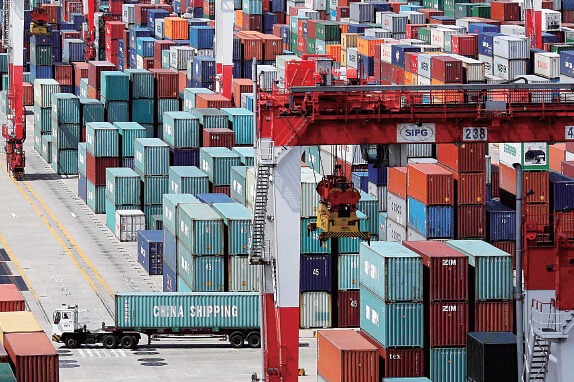
China vows to retaliate against ‘hegemony and bullying’ tactics
China denounced the United States’ latest threat to impose tariffs on an extra $200 billion worth of Chinese imports as “totally unacceptable” trade hegemony and bullying, and vowed on Wednesday to fight back to protect its “core interests”.
It is totally unacceptable for the US to publish a tariff list in a way that escalates tensions, the Ministry of Commerce said in a statement.
“To defend the core interests of the nation and its people, the Chinese government will, as always, be forced to impose necessary countermeasures,” it said.
The ministry gave no details of possible retaliation, but Beijing earlier promised both “qualitative and quantitative” comprehensive countermeasures. It also said it will add a new suit against the US before the WTO regarding the newly proposed tariffs.
Also on Wednesday, Foreign Ministry spokeswoman Hua Chunying described the US’ latest move as “trade hegemony and bullying”, saying China will have to respond to firmly safeguard its legitimate interests.

China stands on the right side of history in defending multilateralism, Hua added.
Their remarks came after the Office of the US Trade Representative announced on Tuesday a $200 billion list of Chinese goods for possible 10 percent tariffs.
The items ranged from electronic components to cat food. The US claimed the tariffs were in response to Beijing’s “failure” to change its policies and in retaliation for last week’s US tariff hike by increasing duties on US goods.
The spiraling conflict has prompted warnings it might chill global economic growth.
Li Chenggang, assistant commerce minister, said additional tariffs will put tremendous pressure on global companies and consumers.
He said China will not change its long-term commitment to improving the domestic business environment, opposing unilateral measures and supporting the multilateral trading system.
The latest list of $200 billion in products to be subject to tariffs against China doubles down on a reckless strategy that will boomerang and harm US families and workers, according to David French, senior vice-president for government relations of the National Retail Federation in the US.
“Tariffs on such a broad scope of products make it inconceivable that American consumers will dodge this tax increase as prices of everyday products will be forced to rise,” French said in a statement.
The US is seeking public opinion regarding the latest proposed modification of tariffs on Chinese goods. The public comment period ends on Aug 30.
Uncertainties may still exist about whether the whole list will finally take effect and what kinds of goods will be targeted, said Ma Jun, a member of the People’s Bank of China’s monetary policy committee.
China is busy studying the impact of an escalating trade war on affected companies and industries, and might consider adopting new measures to minimize negative impacts, according to Ma.

More global experts on trade are expressing serious concerns on the latest protectionist tariffs introduced by the US against China, the European Union, Mexico and Canada.
Such tariffs, they say, severely affect the global supply chain and put an extra burden on multinationals, including US companies sourcing components from the rest of the world.
“With regret from many (countries) around the world, the US has departed from the principle of free trade and has embarked on a full-blown trade war,” said Christopher Bovis, a professor of international business law at the University of Hull in England.
“The US actions threaten to unseat global supply chain arrangements and destroy existing trade partnerships that have promoted economic growth and employment in many parts of the world.”
Hans Uszkoreit, an academician with the European Academy of Sciences, said against the backdrop of China-US trade tensions, economic, scientific and technological cooperation between China and the European Union are expected to be put on a fast track.
Uszkoreit expected that the trade spat can, to some extent, “bring China (and the) EU closer”, as the two already share long historical links and manufacturing connections.
On July 6, US tariffs on $34 billion of Chinese goods, including medical devices and airplane parts, took effect.
Douglas Morton, head of Asia research at Northern Trust Capital Markets, contended that the tariffs, which also impact exchange rates, will create challenges for multinationals that take out loans in one market to pay for their expansion in another.
Airlines and property companies are also especially vulnerable to exchange rate fluctuations, Morton added.
Zhao Huanxin in Washington and Ren Xiaojin in Beijing contributed to this story.
By Cecily Liu,Zhong Nan,Jing Shuiyu | China Daily |
California growers of Pima cotton will feel tariff impact

There is uncombed cotton. Combed cotton. And Pima cotton.
All of it is grown by US farmers and as of Friday, it’s subject to the 25 percent tariff that China has slapped on $34 billion worth of US goods in retaliation for the same tariff percentage on the same amount of goods imposed by the Trump administration earlier Friday.
Cotton is produced in 17 states. Texas produces the most, followed by Georgia and Mississippi. In 2017, the US produced 21.3 million bales of cotton, according to the US Department of Agriculture (USDA).
The US is the world’s largest exporting country for cotton and exports around three to four times more than what is consumed domestically. For the past decade, cotton contributed around $5.48 billion annually to the US farm-level production value, the USDA said.
American Upland cotton and American Pima cotton are two cotton species grown in the US. Upland cotton made up around 96.7 percent of all US cotton production in 2017, according to the USDA. Pima cotton is primarily grown in California and Arizona. Pima cotton is soft to the touch and durable.
In the Central Valley region of California, one type of cotton that represents the majority of the state’s cotton acreage and that will be hit by the tariffs is the highly prized long-staple American Pima cotton. It’s soft to the touch and durable. Most of the crop is exported to China and India.
California exported $88.5 million worth of cotton to China and Hong Kong in 2016. For the 2017-18 crop year, that value has jumped to about $185 million due to increased shipments, said Jarral Neeper, president of Calcot, which markets cotton from California, Arizona, New Mexico and Texas.
It’ll be difficult for China to find another reliable source of Pima cotton, Neeper told The Daily Democrat newspaper in Woodland, California. because there aren’t too many places except California that produce it. China could buy extra-long staple cotton from Egypt, and there are some varieties of Pima produced in India, but not as good quality, he added.
Many textile mills have licenses to use the Supima trademark and the only way they could produce their goods is to buy US Pima cotton, Neeper said.
With the tariff, the mills will have to pay more, and then that apparel will come back to the US and hit consumers with a higher price, he said.
“All of a sudden, your $80 Brooks Brothers dress shirt is 150 bucks,” Neeper said.
“This is an issue that is going to affect the US cotton industry rather significantly as China has traditionally been a larger buyer of US cotton and a massive supplier of products back to the US market,” said Marc Lewkowitz, the president and CEO of Supima, a nonprofit promotional organization in Arizona representing American Pima-cotton growers. It is also the owner of the Supima trademark for American Pima.
He said that about 95 percent of the American Pima crop is exported every year, and typically China imports about 40 percent of that crop. For the crop year that runs through July 31, China has purchased 239,200 bales, or approximately 120 million pounds of the fiber, valued at around $200 million, Lewkowitz told California Apparel News.
Cannon Michael, president and chief executive of Bowles Farming Company, which grows Supima and other cotton on land near Los Baños, California, said some speculators have pulled out of the market, which has put a damper on cotton prices.
His farm exports about 60 percent of its cotton crop to China and another 40 percent to India. “Any trade disruption is potentially negative,” he told Apparel News, “especially for states like California that export a lot of agricultural products
Once the world’s top cotton importers, China has seen its imports reduced to around 1 million tons last year, mainly due to efforts to reduce its state stockpiles. As the inventories are reduced, China has begun allowing more imports, cotton industry analysts said.
China is set to return as a major cotton importer, taking 10 million to 15 million bales (2 million to 3 million tons) a year by 2019/20, compared with 5 million bales this year, according to Tim Bourgois, head of the cotton platform at Louis Dreyfus Company.
“Chinese demand is huge. This is an opportunity for India to raise exports,” said Atul Ganatra, president of the Cotton Association of India.
India has lower freight rates, and shipments from India reach China in about two weeks compared to an average of three to six weeks from other producers Australia and Brazil, dealers told Reuters.
The weak rupee also makes India’s exports more appealing, and freight costs to the neighboring Asian country can be relatively cheap, Keith Brown, president of Keith Brown & Co, a brokerage in Moultrie, Georgia, told Bloomberg. “It’s a question of price and proximity.”
By AI HEIPING | China Daily USA
China calls proposed tariffs on $200b worth of goods ‘unacceptable’
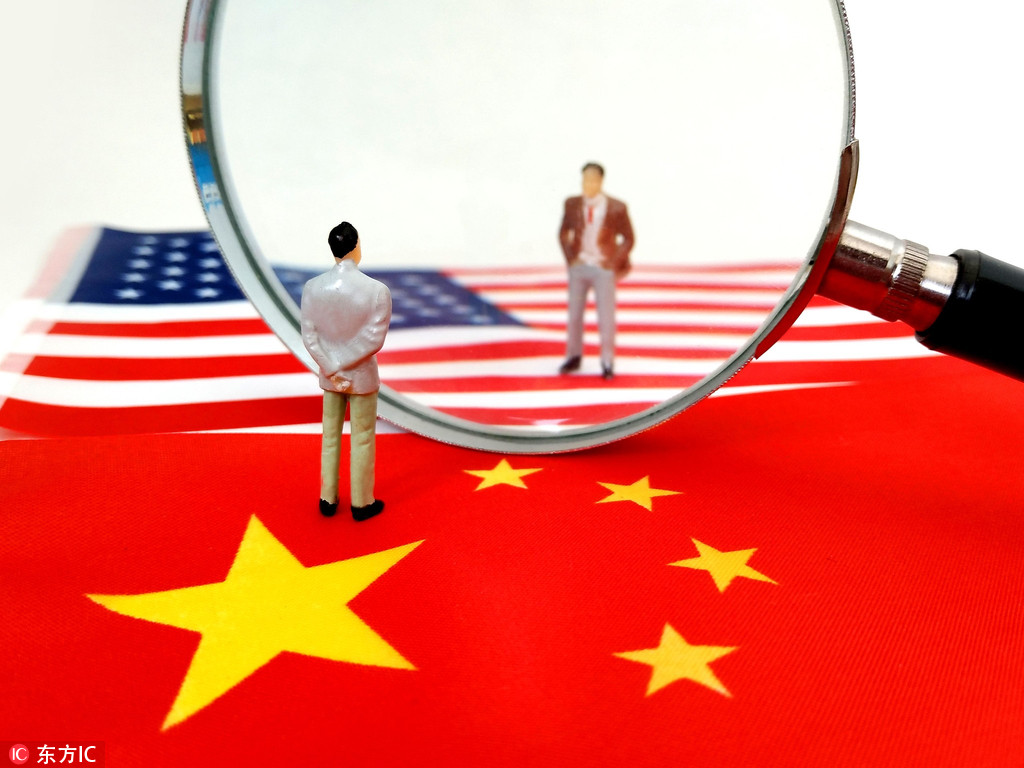
The latest proposed tariffs by the United States on $200 billion worth of Chinese imports are unacceptable, a spokesperson with China’s Ministry of Commerce said on Wednesday.
It harms China, the world, as well as the United States itself. It’s irrational and will not be accepted by people, said the spokesperson.
The Chinese side was shocked at the US’ latest move. In order to protect the country’s core interests and people’s basic interests, the Chinese government will always take countermeasures, said the ministry.
China calls on mutual efforts from the international community to maintain the practice of free trade and the multilateral trading system, and fight trade bullying, it said.
China will tack on the case to its suit against the US at the World Trade Organization, the ministry added.
chinadaily.com.cn
BASF to establish $10b site in Guangdong

German chemical giant BASF will invest $10 billion to build a Verbund chemical production site in South China’s Guangdong province as its largest investment project to date, according to a company press release.
Martin Brudermüller, chairman of the board of executive directors of BASF SE, and Lin Shaochun, vice-governor of Guangdong province, signed a non-binding memorandum of understanding in the presence of visiting Chinese Premier Li Keqiang and German Chancellor Angela Merkel in Berlin, Germany on July 9.
The Verbund site in Guangdong would be BASF’s largest investment, and be operated under the sole responsibility of BASF. The site would ultimately be the third-largest BASF site worldwide, following Ludwigshafen, Germany and Antwerp, Belgium. The investment is estimated to reach up to $10 billion by the project’s completion in around 2030.
The first phase of the project includes a steam cracker with a planned annual capacity of one million tons of ethylene as the core of its Verbund system. Multiple downstream units will be established at the later phase to provide more consumer-oriented products and solutions for transportation and consumer goods industries.
The clients of the above-mentioned and other fast-growing industries have all invested in Guangdong, China’s most densely populated province. With more than 110 million people, Guangdong enjoys an annual gross domestic product growth rate of about 7 percent. The total volume of its GDP has exceeded Spain, and will soon catch up with that of South Korea.
Another Verbund site of BASF in China is located in Nanjing, East China’s Jiangsu province. Established in 2000, the Nanjing site is a 50:50 joint venture between BASF and Sinopec.
By Wang Junwei | chinadaily.com.cn
Will China and US enter a new ‘Cold War’?

In the past 40 years, the world has seen the end of the Cold War and the emergence of the United States as the sole superpower, prompting it to assume the global competition between political systems had ended without realizing that these changes have been accompanied or followed by multi-polarization and globalization.
More important, global governance has been evolving from a Western undertaking into one featuring increasing East-West collaboration, especially between China and the West. And as President Xi Jinping has said, being a socialist developing nation, China will “resolutely safeguard national sovereignty, security, development interests, actively participate in and lead global governance reform, (and) forge a more complete global network of partnership”, making a great contribution to the “New Era”.
Trump’s strategic intention is clear
China, however, also faces unusual difficulties and resistance. Although cooperation has been the mainstream in Sino-US relations, marred by frictions, since the two sides established diplomatic ties nearly four decades ago, the US’ China strategy has gradually changed from “strategic ambiguity” (not viewing China as a friend or an enemy) to one of “strategic clarity”. That US President Donald Trump has identified China as a main strategic rival makes clear his intention to contain China’s rise.
The shift in China-US ties coincides with the new phase of “great development, great change, and great adjustment” in the global context, with the international environment getting more complicated and uncertainties growing.
First, wrangling over globalization has escalated, populism and protectionism are rising in the US and many other Western societies, and more trade frictions will follow. These developments seriously affect global economic connectivity and coordinated development, restrict the resolution of global issues, and make global governance more difficult. The widening wealth gaps between and within economies, and the continuous imbalance between market efficiency and social fairness have become a main driver of “anti-globalization”.
Second, differences over international rules have increased, the relatively balanced world order is breaking, and “disorder” and “fragmentation” are increasingly undermining global governance. With his “America First” policy, Trump is unwilling to continue providing global public goods, and trying to remake international rules to continue US hegemony. As such, the US has become a “revisionist” force, and the biggest variable in international relations.
Third, geopolitics has become even more complex, major-country relations are tense, and cooperation is ebbing. US-Russia confrontation is intensifying, the Middle East is in chaos and world energy supplies are fluctuating. And despite Trump’s meeting with Kim Jong-un, top leader of the Democratic People’s Republic of Korea, the future remains full of uncertainties, with the competition to gain the upper hand in cyberspace and polar regions rising. Besides, the US’ continued attempts to ignite a trade war with China are raising fears that the two may ultimately fall into the “Thucydides’ trap”.
Four, the world faces the difficult choice between conflict and integration of civilizations. But the US-led West believes in a conflict of civilizations, and Western societies in general consider their ideologies and systems to be the best in the world. In fact, the West’s tireless efforts to promote liberal Western democracies and attribute all contradictions to the “conflict of civilizations” are the root cause of various geopolitical problems.
Many in US mistakenly see China as a threat
The China-US trade disputes appear to be the beginning of major-country competition. China’s GDP now accounts for 15 percent of the world total, with the achievements of four decades of reform and opening-up reflecting the vigor and dynamism of the Chinese economy. But many in the US have mistaken China’s political stability and growing military as a threat because of their Cold War mindset and thus resorted to measures to contain China’s rise.
Former Trump adviser Steve Bannon said the report of the 19th National Congress of the Communist Party of China is actually a plan for global dominance in the next few years, and warned that the Made in China 2025 program will enable China to control global manufacturing. He also said the Belt and Road Initiative facilitates China’s geopolitical expansionism, Chinese 5G aspirations will help it to dominate technology, and the broader use of the yuan will deprive the US dollar of its status as a reserve currency. Such remarks expose Americans’ zero-sum game thinking and misunderstanding of China’s goals.
The US has triggered the trade dispute with China ostensibly to strike a balance in bilateral trade, but the real reason is to use a trade war to contain China’s economic and technological development in the same way it contained Japan in the last century. But the US should know a trade war will not resolve its systemic, structural contradictions or the issue of division of labor in the global value chain.
A trade war is the first step of a geopolitical containment policy, but will ultimately lead to a fierce confrontation between the existing hegemonic power and a rising power over the world order and international rules. So it is unrealistic to assume everything will be fine after the issue of trade deficit is resolved.
Strategic orientation of Sino-US relations
Despite repeated consultations and China’s restraint, the US seems hellbent on instigating a full-fledged trade war and expanding it to bilateral investments, intellectual property, strategic industries, the Belt and Road Initiative, the South China Sea issue, the Taiwan question, and the internationalization of the yuan. Why?
An analysis of the orientation of US-China relations from the strategic and historical perspective will make things clearer. As Laotzu said, the future has come before the past is gone. So the changing China-US relationship will be accompanied by various uncertainties and risks.
Will China-US friction lead to a new “Cold War” featuring all-round confrontation? Such a concern is not totally groundless. While striving for the best outcomes, China should prepare to deal with the worst-case scenario while engaging in active communication and in-depth consultation. The “unknown” and “uncertain” have actually provided an opportunity for exploring the two countries’ common grounds, which could help them adjust their respective policies, so as to create a “win-win”, rather than “lose-lose”, situation.
But if the US insists on containing China, the chances of the two sides falling into the “Thucydides’ trap” will increase. The US knows this very well. So why is it pushing bilateral ties toward confrontation? It is doing so mainly because it feels China’s strategic orientation doesn’t conform to its expectations.
Non-realization of expectations irks US
The US supported China in its reform and opening-up efforts and in joining the World Trade Organization in the hope of making China gradually embrace Western values. US leaders expected reform and opening-up to facilitate political openness, leading to China accepting the US-brand of “democracy”.
That China has blazed a different trail has made the US realize it overestimated its capability to lead China’s strategic orientation. And the success of the “Chinese model”, which offers other developing countries an option different from the “American model” for economic development, has made the US blind to China’s remarkable contributions to the world and US economies. Instead, it sees China’s development as an attempt to grab global dominance from the US.
An article in the National Interest magazine, titled “America vs. Russia and China: Welcome to Cold War II” analyzed the possibility of a “Second Cold War” from the perspectives of politics, diplomacy, military and economy, reflecting the opinions of many American elites. In recent years, the term “New Cold War” has been used to describe worsening US-Russia relations. Now it is also being applied to China-US ties. Only a serious analysis can reveal what it really means for the two countries and the world.
The US faces difficult choices at home and abroad, as many in the US believe their country will pay a very high price for an all-out confrontation with China. And according to PricewaterhouseCoopers’ estimate, in terms of purchasing power parity, China’s GDP will reach $58.5 trillion by 2050 while the US’ will be $34.1 trillion. This somewhat explains the US’ actions.
Still, proper and in-depth communication can prevent a China-US “Cold War”. After all, economic interdependence has built a global community of shared interests, and there can be no winner in a trade or any other war.
Therefore, the US needs to abandon its Cold War era approach and, instead, try to build a geopolitical model of peaceful co-existence, which philosopher John Gray proposed as a means of dealing with major-country relations, especially China-US relations. Also, the US need not worry about a “Beijing consensus” replacing the “Washington consensus”, because once countries start building a community of shared interests, globalization, multi-polarity, and pluralism will become the dominant trend.
| China Daily |
US jobs, economy to be hurt by trade war
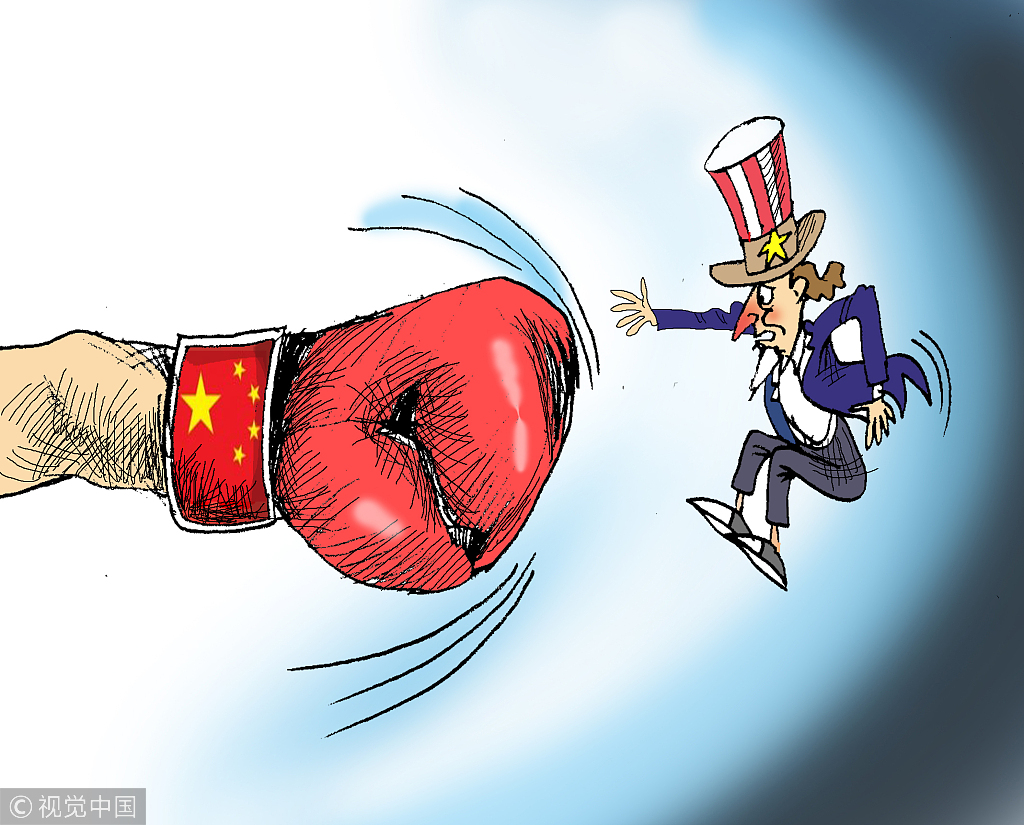
US experts have voiced deep concerns over the administration of US President Donald Trump’s trade war against China, a war that they say violates WTO rules and will hurt US jobs and the nation’s economy.
Trump fired the first shot on Friday by imposing punitive tariffs on $34 billion in imports from China. China quickly retaliated by levying tariffs on the same amount.
Gary Hufbauer, a nonresident senior fellow at the Peterson Institute for International Economics and deputy assistant secretary for international trade and investment policy at the US Treasury from 1977 to 1979, said “‘bully’ is the correct description” of what Trump has been doing to China, Canada, Mexico and other US trade partners.
Before levying tariffs on China, the Trump administration had imposed new tariffs on steel and aluminum in the name of national security, triggering retaliation from US trade partners as well as their complaints filed with the World Trade Organization. On Friday, China also lodged a WTO complaint against the latest US tariffs.
“Unfortunately, at the moment there is no effective domestic backlash to the destruction that Trump is wreaking on the international economic order,” said Hufbauer, adding that most people in the US and many lawmakers are not familiar with WTO rules.
Trump has repeatedly accused the WTO of treating the US unfairly and has reportedly threatened to withdraw from the international trade body.
Wayne Morrison, a trade and finance specialist at the Congressional Research Service, said there is great concern among US trade experts that Trump’s unilateral action will undermine the global trading system that the US helped build.
Henry Levine, a senior adviser at the Albright Stonebridge Group and a former deputy assistant secretary of commerce for Asia in the administration of former US president George W. Bush, said Trump’s decision to go forward with tariffs on Chinese goods reflects two of his deeply held beliefs: that trade is a zero-sum game and that other countries have been taking advantage of the US for decades with their trade surplus.
“You can see these two perspectives not only in the tariffs imposed on Chinese goods, but also in tariffs imposed on products from US friends and allies,” he said.
Economists and trade experts have disagreed with Trump’s interpretation of the cause and benefit of the trade imbalance. They believe that the US trade deficit is caused primarily by its fiscal policy, the low saving rate and the role of the US dollar as a global reserve currency.
“Trump is ignoring the pleas of the business community. He seems to be betting that his get-tough approach against China will make his political base happy, even though these policies will hurt many of them in the long run,” Morrison said.
“A trade war would be very costly to both economies and the global economy as a whole,” he added.
A study led by Mary Lovely at the Peterson Institute showed Trump’s latest tariffs on China will hit non-Chinese supply chains even harder. Many of Chinese exports to the US come from foreign companies operating in China.
Edward Alden, a senior fellow at the Council on Foreign Relations, said the only way for the Trump administration to change course is as a result of domestic political pressure.
“My hope is that then there will be a period of reflection in which all the countries involved will find a way to come back to the negotiating table,” he said.
“I still believe there is time to prevent this trade war from further escalation, but we are in a dangerous period,” Alden said.
On Friday, the Office of the US Trade Representative announced guidance for companies on how to apply for exclusion from the newly imposed tariffs on products made in China. Companies will have 90 days to file the requests.
“The real intention of the Trump administration is to deter China while minimizing the negative impact on its electorate,” said Mei Xinyu, a researcher with the International Trade and Economic Cooperation Institute of the Ministry of Commerce.
“In fact, even if a certain number of US companies obtained exclusions from the additional tariffs, it would not relieve the pressure on its overall economy. High costs imposed on Chinese goods would eventually be passed on to US consumers,” said Li Yong, deputy director of China Association of International Trade Expert Committee.
| China Daily |
Ministry: US tariffs set to backfire
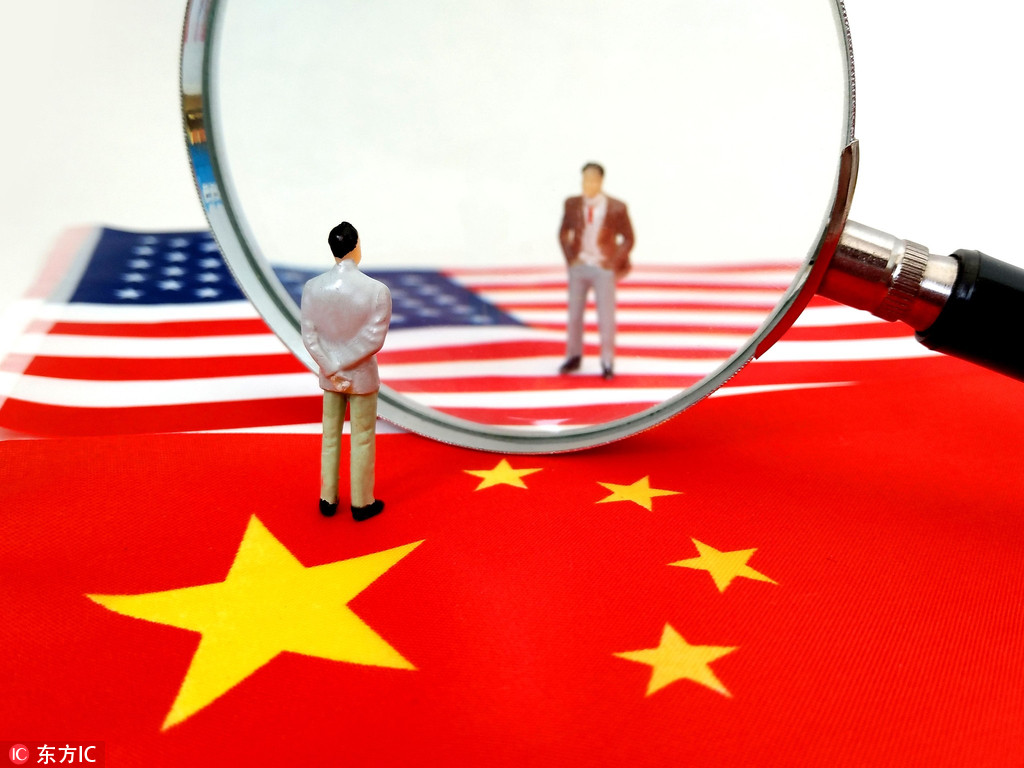
The threatened tariffs on goods from China will backfire on the United States if they take effect on July 6, the Chinese Ministry of Commerce said on Thursday.
Ministry spokesman Gao Feng said about 59 percent of the $34 billion imports subject to US tariffs are produced by foreign-invested enterprises in China.
“If the list takes effect, the US will actually impose tariffs on both Chinese and foreign companies, including US ones,” Gao said. “The US is firing at not only the world, but also itself.”
Gao reiterated China is not eager to engage in a trade war, but will do so to firmly defend the interests of the country and its people.
The General Administration of Customs said on the same day China will levy tariffs on US goods, as soon as US’ tariffs are in force.
By Jing Shuiyu and Ren Xiaojin | chinadaily.com.cn | Updated: 2018-07-05 10:42



